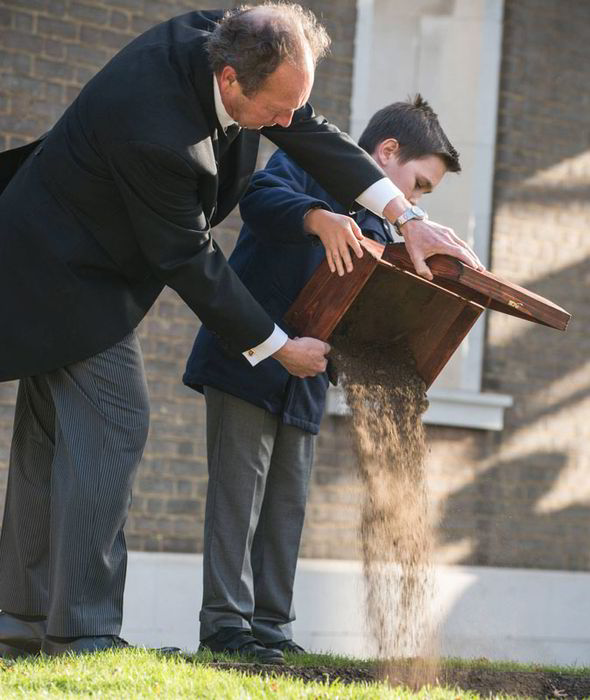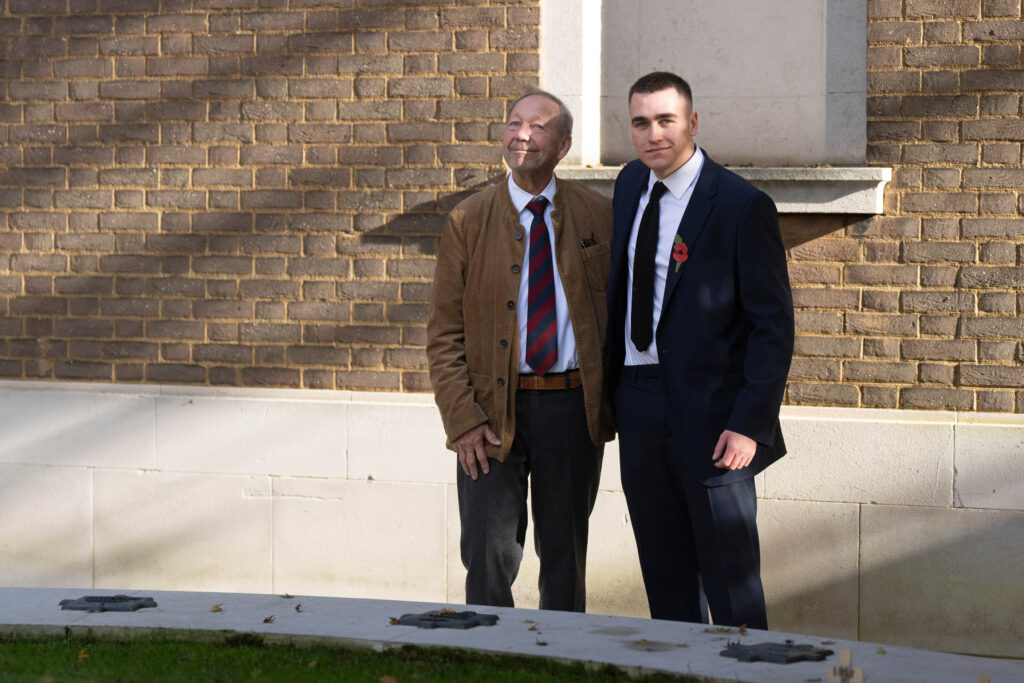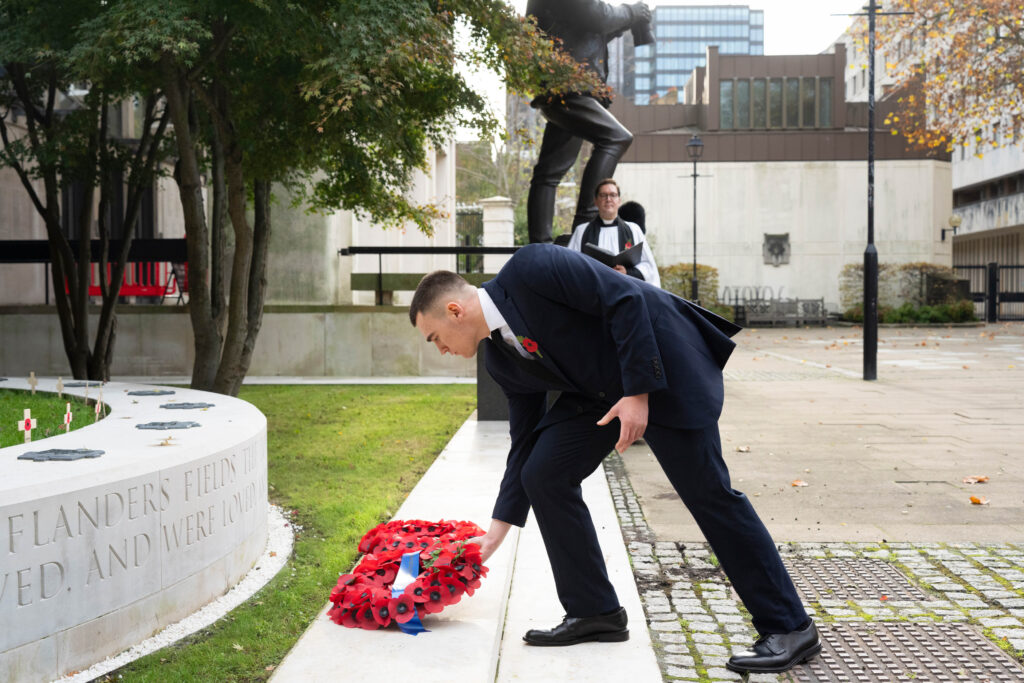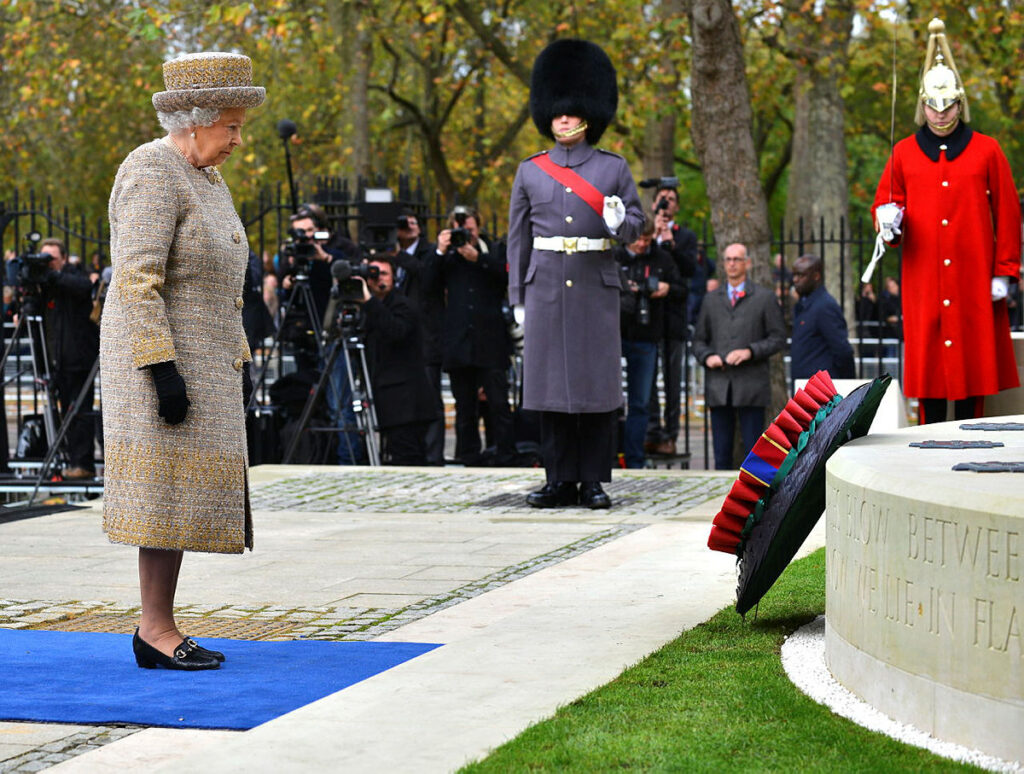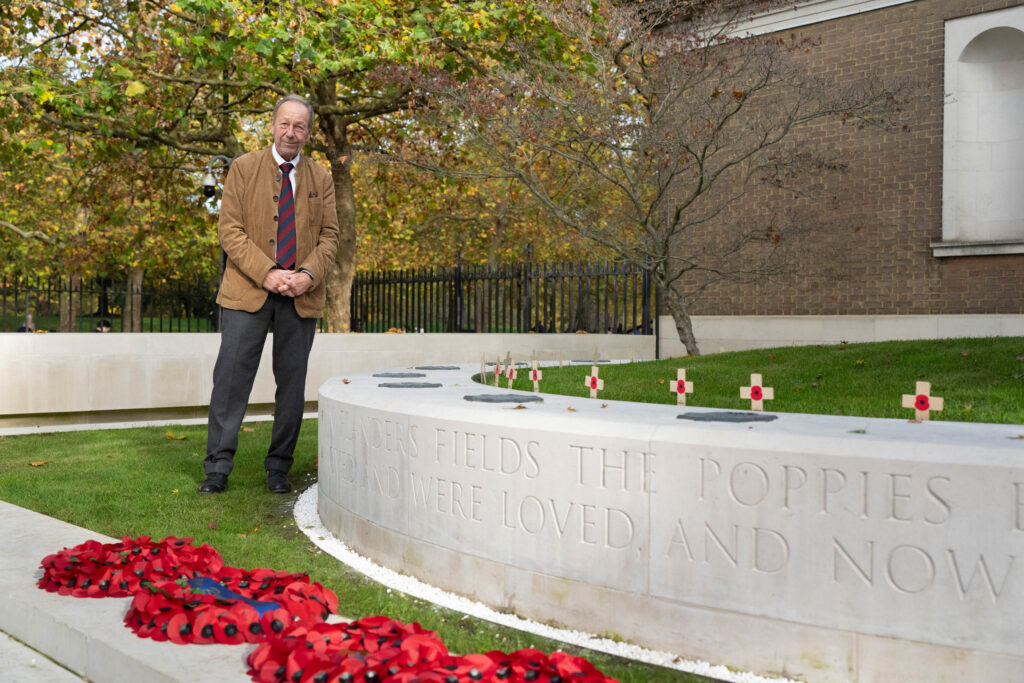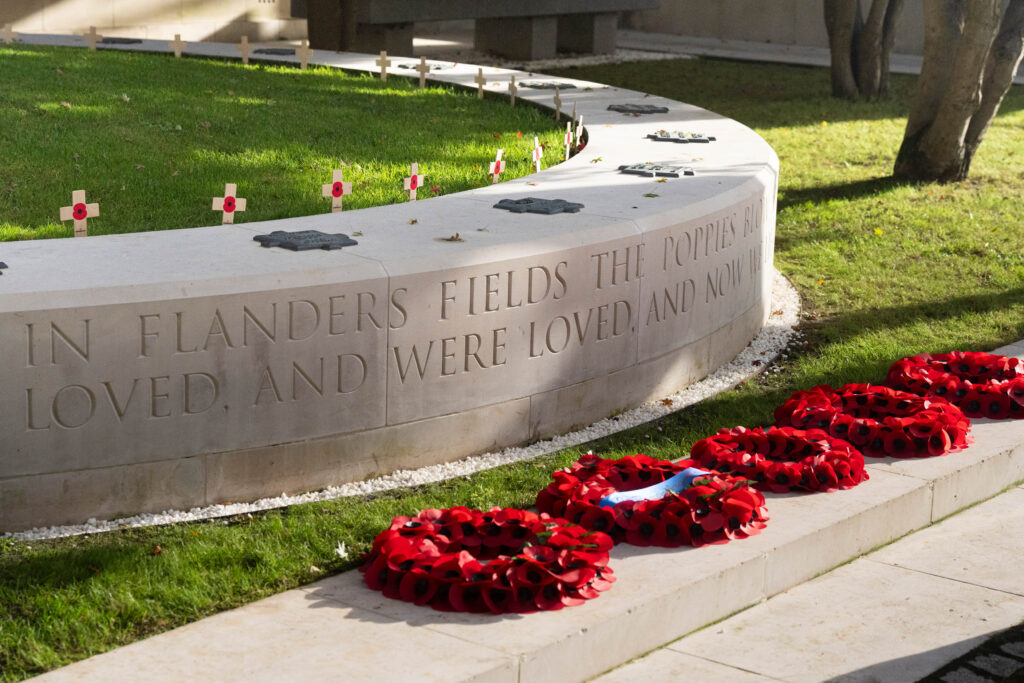News
10 Years On: The Flanders Fields Memorial Garden
Posted on: November 14, 2024
The Flanders Fields Memorial Garden project was conceptualised by Piet Blanckaert, architect; Nic Van der Marliere, General Representative of Flanders in the UK; and Andrew Wallis, Director of The Guards Museum.
The Flanders Fields Memorial Garden was established in 2014 to commemorate the 100th anniversary of the outbreak of the First World War. Its’ creation took many years of hard work from dedicated individuals. This year, we mark 10 years since the garden’s official opening by Her Majesty Queen Elizabeth II and His Majesty Philippe, King of the Belgians.
The heart of the garden is the soil in the raised centre bed, gathered from 70 battlefield cemeteries in Flanders where so many lost their lives. With the support of the Commonwealth War Graves Commission, this was the first time this soil had been allowed to leave the cemeteries. In doing so, there is now a corner in London that is forever the battlefields of Flanders – a symbolic mirror to Rupert Brooke’s poem, The Soldier.
“If I should die, think only this of me:
That there’s some corner of a foreign field
That is for ever England.”
Rupert Brooke, The Soldier (1915)
Children from 70 English and Belgian schools worked together to gather the soil, placing them in hessian sandbags of the same material used to reinforce the trenches in the First World War. These sandbags were transported first to the Menin Gate, then by ship on the Frigate Louise-Marie overseas to London. Once in London, they were moved with full military honours by a British Army gun carriage, drawn by King’s Troop Royal Horse Artillery and escorted by members of the Household Cavalry and Metropolitan Police.
A small amount of earth from each sandbag was put inside a casket to be ceremonially emptied into the bed, with the rest to follow later on. The crosses around the perimeter of the garden bed contain the name of all 70 battlefield cemeteries, together forming a chain that symbolises the closing of the circle and feeling of unity.
Engraved around the bed are words from John McCrae’s poem, In Flanders Fields (1915). This poem inspired the use of the poppy as a symbol of remembrance. McCrae served during the First World War at Essex Farm, one of the battlefields from which the soil was collected. During his service, he lost friends and fellow soldiers. His poem is therefore a touching and poignant tribute to those who lost their lives during this conflict.
“In Flanders’ fields the poppies blow
Between the crosses, row on row,
That mark our place: and in the sky
The larks, still bravely singing, fly
Scarce heard amid the guns below.
We are the dead. Short days ago
We lived, felt dawn, saw sunset glow,
Loved and were loved, and now we lie
In Flanders’ fields.
Take up our quarrel with the foe;
To you from failing hands we throw
The torch; be yours to hold it high,
If ye break faith with us who die
We shall not sleep, though poppies grow
In Flanders’ Fields.”
John McCrae, In Flanders Fields (1915)
From this poem, we are reminded of not only the sacrifices that were made, but also the importance of remembrance – the significance of passing the torch to the generations that follow. This is the core of the garden, a legacy that sits in stone, honouring the fallen for years to come.
This Armistice Day, a commemorative service was held at the Flanders Fields Memorial Garden. It was attended by members of the Household Division alongside others, with wreaths laid on behalf of soldiers of the Commonwealth, the Royal Guild of St Sebastian, and the London Central Garrison.
Also able to return, to pay tribute to those who served and sacrificed, were some of the instrumental individuals who brought the garden into being. The service was attended by.Piet Blanckaert, the architect who designed the garden and oversaw many facets of the project from its initial conception to the opening ceremony; Michel Van Hoonacker, who ensured this vision was realised through remarkable fundraising efforts; and finally,.a young boy who emptied the first of the sacred soil into the garden bed at just 8 years old. However, 10 years on, this young boy returned as a man, laying a wreath on the garden in a solemn moment of remembrance.
